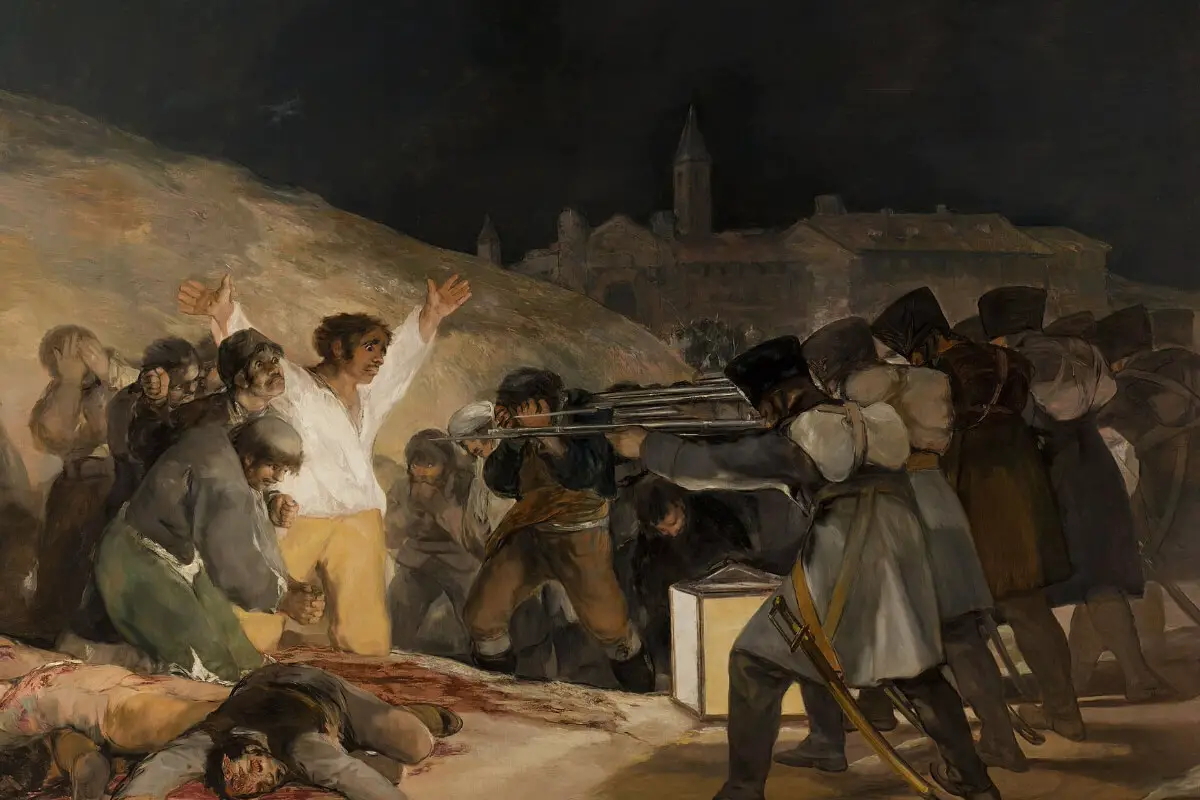The intensely captivating essence of the color black, commonly associated with mystery, power, and depth, has been an integral element in art since time immemorial. The crucible of art history reveals the power of black, evolving in its significance and perception across diverse eras, cultures, and art movements.
From the early cave paintings to modern and contemporary art, black remains a dominant tool in the artist’s palette, signifying various emotions and narratives. It has been wielded by renowned artists to create some of the world’s most celebrated black paintings, each telling its unique tale and reflecting societal contexts in their times. The symbolism of black, its psychological impact, and its interpretational versatility make it a compelling subject of study in art.
Table of Contents
- Historical Significance of Black In Art
- Renowned Black Paintings
- Interpreting Black In Art
- Related Questions
Historical Significance of Black In Art
As one delves deep into the kaleidoscope of art history, it becomes immediately evident that color plays a crucial role in defining eras, movements, and masterpieces. None is perhaps more profound and enigmatic than the use of black.
From the cave paintings of prehistoric times to the provocative canvases of contemporary artists, the evolution of the color black in art mirrors shifts in societal, psychological, and philosophical paradigms.
Black was often the color of choice, beginning with the earliest art forms. Charcoal and mineral pigments provided Paleolithic artists, such as those at Lascaux and Altamira, with their primary medium. In these early works, black lines and figures on a natural stone surface create a stark contrast, accentuating the scenes’ raw power and visceral intensity.
With the dawn of Egyptian civilization, black took on rich symbolic meanings. The Egyptians associated it with life, fertility, and rebirth, reflecting the fertile silt left by the annual Nile flood. This association is evident in their artwork, where black is frequently used to represent fertile lands and godly figures linked to rebirth, like Anubis, the black jackal-headed god of embalming and the afterlife.
In contrast, black was considered a sad color during the Middle Ages, linked to death and the unknown. Yet, artists used it regularly as a grounding color to build shadows and depths. Art pieces from this period often used chiaroscuro, contrasting dark and light colors, further amplifying black’s power in shaping space and form.
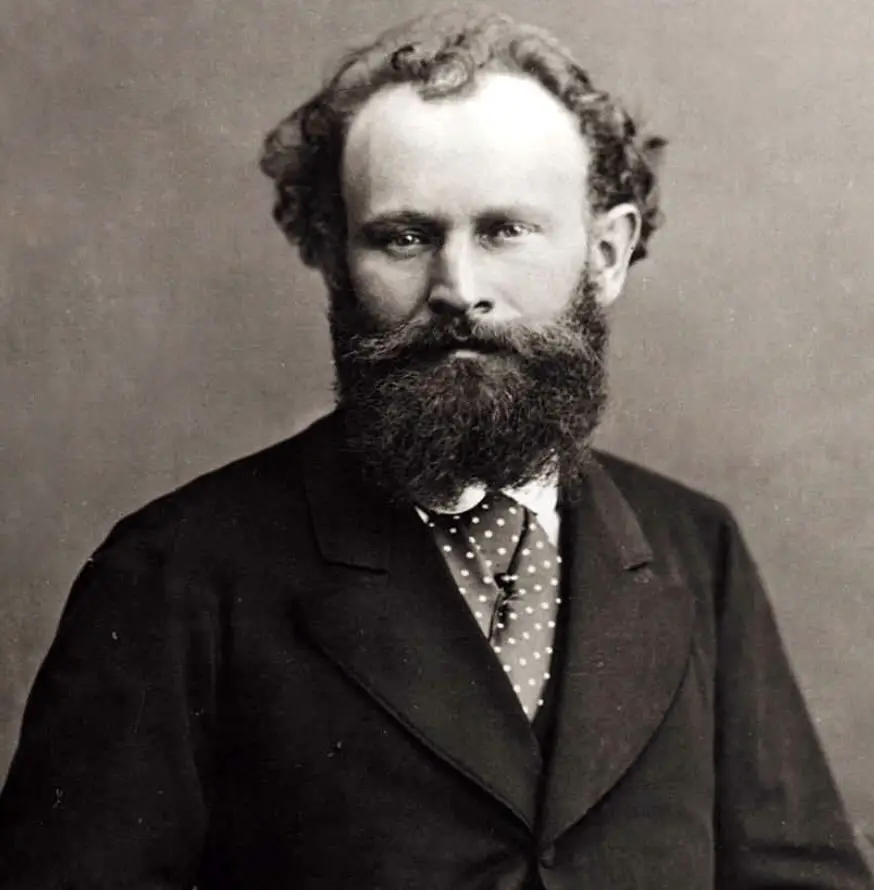
Fast forward to the 19th century, and artists like Édouard Manet and Francisco Goya employ black not solely for its dramatic contrasts but also as a tool to create atmosphere and tension.
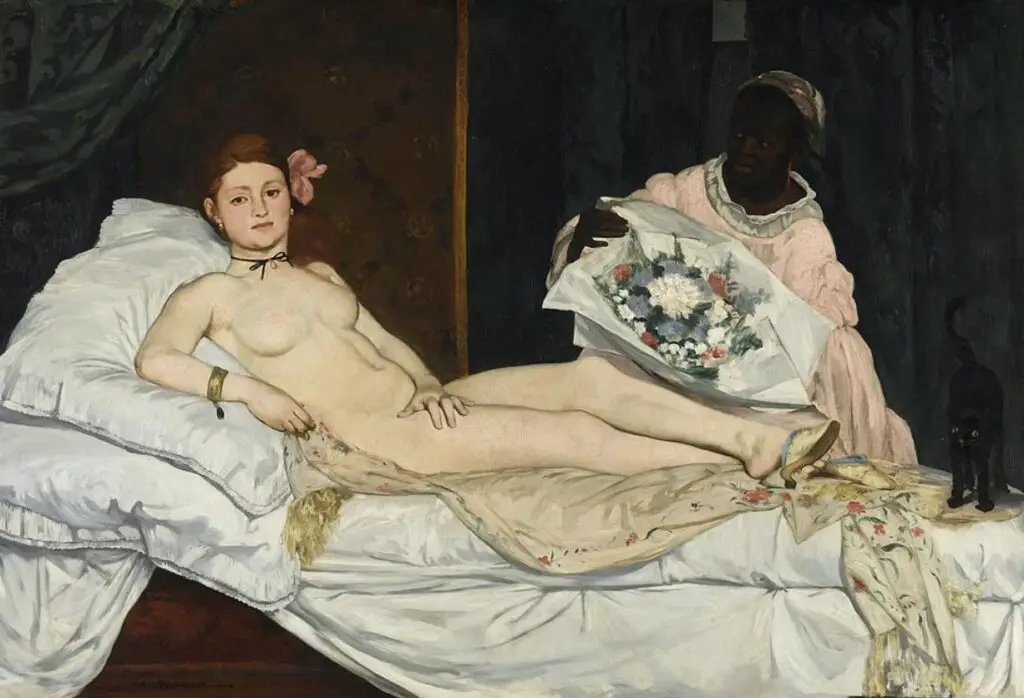
Manet’s “Olympia” and Goya’s “The Third of May 1808” stand as a testament to the courageous ability of blacks to expose society’s underbelly and provoke audience emotion.
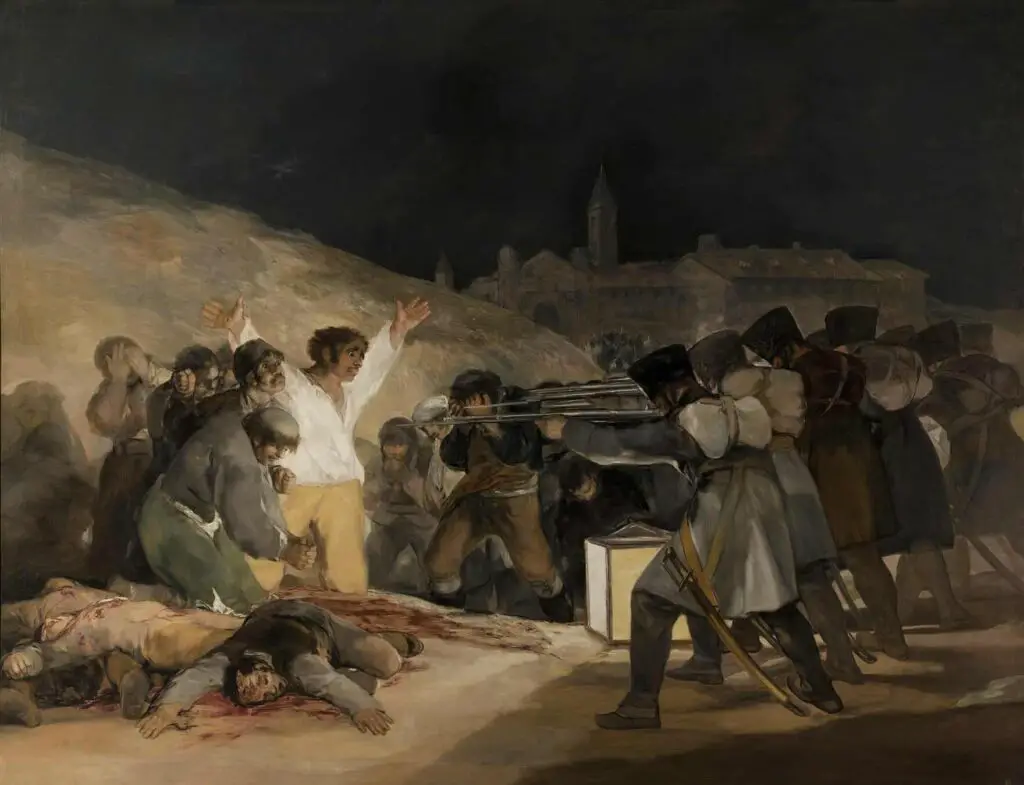
Enter the 20th century: Artists started deconstructing art conventions and challenging the status quo, leading to abstract expressionism and minimalism movements. Black comes to the forefront as an embodiment of pure form. Consider Mark Rothko’s weighty black canvases or Ad Reinhardt’s subtle, almost-black paintings.
These monochromatic works instigate an existential and meditative experience, prompting viewers to explore visual sensations and spiritual introspection.

Recently, blacks expanded further, challenging norms and pushing boundaries. Anish Kapoor’s “Vantablack,” touted as the blackest black, absorbs nearly all light, transforming a three-dimensional object into what appears as a flat void. It is an exploration of color—or the absence of color—that transcends tradition and teases the edges of viewer comprehension.
Each epoch in art history reveals a shifting relationship with the color black. From its earliest usage as a rudimentary tool to its current role as a thought-provoking force, black has been—and continues to be—a seminal catalyst in art.
Whether evoking stark contrasts, stirring emotion, or transcending physical dimensions, black’s significance in art is as profound and limitless as the color itself.
Renowned Black Paintings
Unveiling the Mystique: Renowned Black Paintings and Their Path to Recognition
Art history is a vast, multifaceted journey of constantly evolving techniques, styles, and perceptions. Within this journey, the color black has been utilized by artists as a powerful tool to evoke myriad emotions and construct narratives. Various cultures associate this hue with profundity, mystery, night, death, or void.
These captivating interpretations bring us to contemplate some of the most widely acclaimed black paintings in the art world, the intrigue they provoke, and how they have received such high critical acclaim.
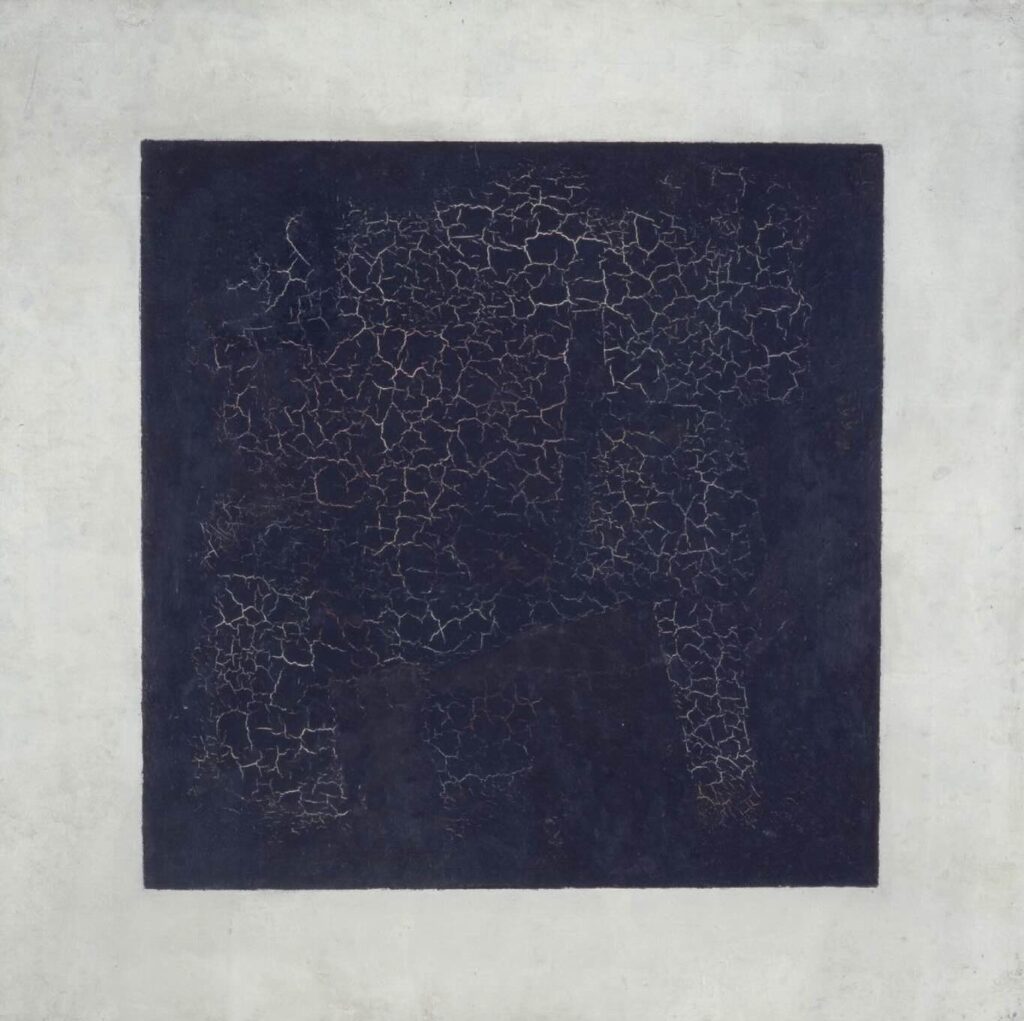
One cannot speak of famous black paintings without first acknowledging Kazimir Malevich’s “Black Square,” a revolutionary piece that marked a significant shift in the 20th-century art narrative.
Created in 1915, this painting is a cornerstone of the Russian Suprematism movement, centered on primary geometric forms painted in a limited range of colors. Comprised of a black square on a white field, Malevich’s magnum opus is revered for stripping art down to its bare essentials — form and color — thereby challenging traditional notions of representation.

Similarly noteworthy is Ad Reinhardt’s “Abstract Painting” series, which he started in 1951. This collection is characterized by near-black canvases, encouraging viewers to question perception and observe subtle compositional changes over time.
Reinhardt’s “ultimate” paintings, as he called them, paved the way for minimalistic and mononomic art, asserting that the simplicity of a canvas laden with black could transcend into an immersive experience.
Exploring a darker dimension from the Surrealist movement is Salvador Dali’s “The Persistence of Memory,” in which he uses black to portray shadowy and enigmatic dreamscapes.
Interpreters and critics deemed this iconic artwork a profound exploration of the subconscious mind, hinting at concepts related to time, memory, and decay. Painted primarily in somber black and other dull shades, Dali’s masterstroke conveys the artist’s complex understanding of reality and illusion.
Commanding attention with a stunning black background, “The Calling of Saint Matthew” by Caravaggio uses a dark hue to highlight the contrasting figures and create an immersive narrative. This utilization of black in tenebrism, where darkness becomes a dominant feature, allowed Caravaggio to steer focus onto the subjects, establishing his innovative style during the Baroque period.
In the modern era, Abstract Expressionist painter Mark Rothko used black in his last series, conveying despair and mortality. His “Black on Gray” series, painted shortly before his death, symbolizes resignation and the abyss of the unknown.
The arrangement of black over gray in these large-scale paintings is a vessel for raw emotion, a theme entwined with Rothko’s legacy.
Materializing from individual cultural contexts, personal experiences, and interpretative lenses, the art world acknowledges black’s power in bestowing profundity and narrative gravity.
The subtle variations in form, contrast, and texture introduced by artists like Malevich, Reinhardt, Dali, Caravaggio, and Rothko compel us to delve deeper into understanding the true essence of art, thus elevating what may seem like an absence of color to extraordinary heights.
Interpreting Black In Art
Interpreting the Color Black in Art
While the former portion of this article already delves into the deep historical background of the color black, it’s equally vital to open a dialogue on its practical application within the realm of painting.
To truly understand the vast range of expression black can account for, one must grasp its diverse historical connotations and decode the aesthetic choices of the artists who have employed this sad yet fundamentally versatile hue in their depicted realities.
Speaking of the transformative power of black in paintings, one cannot overlook the remarkable work of Kazimir Malevich. His iconic “Black Square” is a pivotal landmark of the Russian Suprematism movement.
Stripping away traditional motifs and subject matter, Malevich boldly reimagined the essence of painting by reducing it to its most bare and profound elements. The yielding black square, set against a stark white background, communicates an austere duality between form and non-form, challenging viewers to perceive both the tangible and the abstract.
No exploration of the color black in art could be complete without involving the minimalist perception of American artist Ad Reinhardt. His renowned “Abstract Painting” series exclusively featured different shades of black, purposefully manipulating light, shadow, texture, and the viewer’s perception to create a subtly dynamic visual experience.
Reinhardt strove to eliminate the distractions of color, instead immersing his audience in an enigmatic monochrome world that questioned the very nature of painting itself.
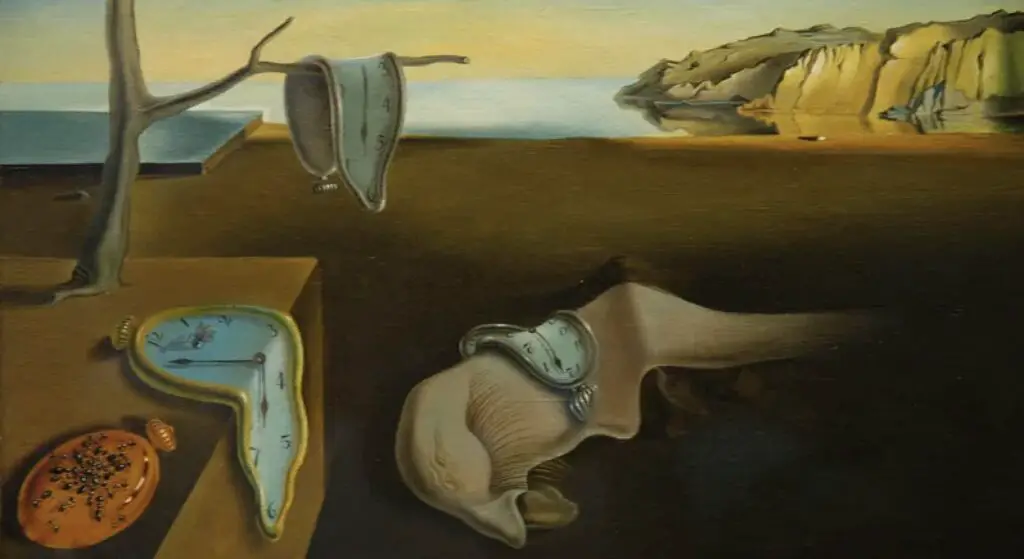
When contemplating a world wherein black paints surreal dreamscapes, Salvador Dali’s “The Persistence of Memory” naturally springs to mind, Dali capitalized on the color’s implicit sense of mystery, using it to underpin his masterpiece with an otherworldly depth.
To Dali, black was not merely a color — a conduit through which he could channel the ineffable and transport viewers into the labyrinth of subconscious thought.
In contrast, the Italian master Caravaggio employed blacks differently. His notorious use of tenebrism, a stark chiaroscuro technique characterized by violent contrasts between light and dark, contributed heavily to the narrative in works like “The Calling of Saint Matthew.”
For Caravaggio, black was instrumental in creating compositional tension, modeling form, and imbuing his scenes with a sense of stark realism.
Meanwhile, in the existential realm of Mark Rothko’s “Black on Gray” series, black assumes a more symbolic tone. It serves as a mournful echo of despair and mortality, acting simultaneously as a blanket of gloom and a profound canvas on which viewers can project their interpretations.
To conclude, the color black in the painting, far from being limited to a flat, ominous tone, encapsulates a vast scale of expression. As a mirror to the artist’s artistic intent, it communicates nuances of profundity, mystery, austerity, minimalism, and narrative gravity, each interpretation as valid and profound as the other.
From its role in the historical timeline to its significant use in individual artworks, black undoubtedly reaffirms its pivotal position within the artist’s palette. It continues to challenge and inspire us to perceive and appreciate art in continually evolving ways.
The fascinating journey of black in art is a testament to its profound impact on modern and contemporary art. The power of black has transcended times, painting epochs with depth and inspiring countless artists to explore its potential.
These black masterpieces have been so impactful that they have stimulated new art movements, influencing styles, techniques, and thematic explorations.
Therefore, black carries immeasurable weight in art history, a narrative that continues to be written in bold, black ink. While black’s past has been fathomless, its future promises to remain even more intriguing, continuing to captivate artists and audiences with its eminent versatility and magnetic appeal.
Anita Louise Art is dedicated to art education, great artists, and inspiring others to find and create their art. We love art that uplifts and inspires. #ArtToMakeYouSmile! #ArtToMakeYouHappy!
If you want to see any of my art, you can find out more by clicking here. If you are interested in what inspires me and my paintings, you can discover more by clicking here.
We have a free newsletter and would love you to be part of our community; you can subscribe to the newsletter by clicking here. I would be happy to talk to you if you have any questions. You can reach me, Anita, by clicking here.
Subscribe to our Anita Louise Art YouTube Channel with great videos and information by clicking here.
Join us for our podcast “5 Minutes With Art.” Spend just 5 minutes a week with us to discover and learn about great art and artists. You can find out more about our podcast by clicking here.
Related Questions
Unraveling the Mystery: Colors and Their Association with Sadness
Color, an integral part of our daily lives, is a powerful communication tool that influences our emotions and actions without realizing it. Different colors evoke various feelings and emotional responses in people, contributing significantly to our perception of the world around us. This essay delves into one particular emotion — sadness, examining its correlation with color from diverse perspectives: psychological, historical, cultural, and contemporary art.
By clicking here, you can learn more by reading Unraveling the Mystery: Colors and Their Association with Sadness.
Art And History – Understanding Our Past
When we study art, it helps us understand and gives us clues about the past. As we see what the artist has painted, we can piece together what life was like during that time in history. Art also helps us better understand the cultures and people who once lived their life.
You can discover more by reading Art and History – Understanding Our Past by clicking here.
Francisco Goya’s Black Paintings: A Descent Into Darkness
The art world has witnessed a multitude of masterpieces, but few are as enigmatic and intensely personal as Francisco Goya’s Black Paintings. Perhaps no other paintings than the series of black paintings show the mind of Francisco Goya and what he was going through.
By clicking here, you can discover more by reading Francisco Goya’s Black Paintings: A Descent Into Darkness.

